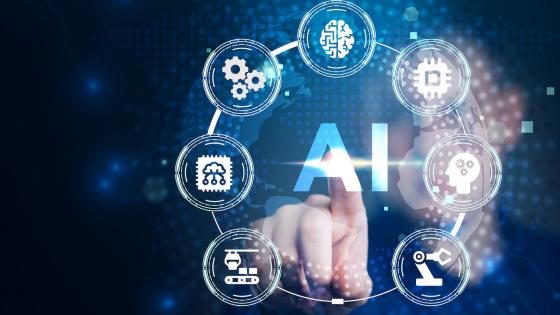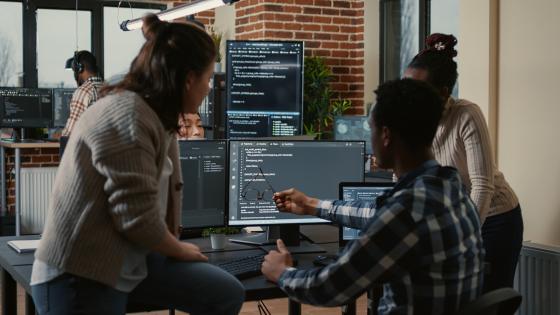The digital transformation of society is happening everywhere, and AI has been at the centre of developments for some time. However, one question that is rarely asked is the role of tax policy: how should taxes on labour and capital be designed to promote AI-driven growth while ensuring that the positive economic effects are also distributed as widely as possible?
Economic research on AI, automation, and taxation is still in its infancy. Most economic research on the impact of new technologies examines worker productivity or returns to capital. An early framework was provided by Acemoglu and Autor (2011), and more recent studies have begun to zoom in on the specific role of automation and AI on growth and labour market outcomes (Acemoglu and Restrepo 2019, Acemoglu et al. 2022, Brynjolfsson 2023, Agrawal et al. 2019, 2022).
In the literature on optimal taxation, there are some new studies that incorporate the consequences of automation and technological change, addressing the effects of changing skill and wealth return distributions, the extent to which new technologies are labour-saving, and specific issues such as robot taxes (Mirrlees 1971, Costinot and Werning 2023, Loebbing 2022, Thuemmel 2023, Gerritsen et al. 2024, Kina et al. 2024).
AI and taxes: A new survey
In a new study (Bastani and Waldenström 2024), we analyse the empirical and theoretical research to date to understand the implications of AI and automation for tax policy.
We envision several possible economic consequences of new technologies that are relevant to tax design: (i) a changing wage distribution, as some workers become more productive while others fall behind or become unemployed; (ii) an increasing share of income in society consisting of capital income; and (iii) a greater dispersion of capital income.
A general challenge for tax policy is to strike a balance between efficiency, by providing incentives for growth and investment in new technologies, and equity, by ensuring a fair distribution of resources and support for those most affected by technological change.
Lessons for tax policy in an era of technological change
Our analysis identifies four key areas where tax policy can draw lessons from the empirical and theoretical research.
1. Progressivity of labour income taxes
Increased wage inequality due to AI may warrant adjustments in marginal tax rates on labour income. However, some experimental studies suggest that low-productivity workers may benefit most from the new technology. Thus, the distributional consequences may not primarily be manifested in differences between different groups of wage earners, but rather between wage earners and capital owners. This in turn implies that the progressivity of payroll taxes does not necessarily need to be adjusted, but that the focus should be on income differentials between labour and capital.
2. The balance between labour and capital taxation
AI and automation are mainly associated with new capital investment, which may lead to an increasing share of capital income in total income in the economy in the future. Such a development justifies increasing capital taxes to maintain the level of tax revenues, as capital income is taxed at a lower rate than labour income. A clear shift towards higher capital shares has not yet occurred in OECD countries, but it is a possible scenario in light of rapid technological change.
3. The design of capital taxation
While a rising share of capital in national income justifies higher capital taxes, it is important that they are designed so as not to offset the productivity-enhancing effects of AI. This can be achieved by avoiding internationally high taxes on corporate profits and other returns to capital. In previous research, we argue that capital taxation in general should be based on flows (capital income) rather than stocks (wealth) (Bastani and Waldenström 2020, 2023). Robot taxes or other taxes on specific technologies should be avoided altogether, as they pose significant ring-fencing problems and risk hampering technology development.
4. The limits of tax policy
Tax policy cannot address all the challenges posed by AI and automation. A basic principle of effective economic policy is to use the most direct measures possible. Addressing distributional challenges requires more tools than the tax system. The distributional consequences of increased industrial concentration can be mitigated by lowering barriers to entry and strengthening competition law. Monopolistic control of data should be regulated by specific data legislation. Training efforts can adapt the skills of the workforce to the new demands of AI, and broadening asset ownership among the population can mitigate rising wealth inequality. Policies should generally aim to protect individuals, rather than specific jobs or industries.
References
Acemoglu, D, and D Autor (2011), “Skills, tasks and technologies: Implications for employment and earnings”, Handbook of Labor Economics 4, Amsterdam: North-Holland.
Acemoglu, D, D Autor, J Hazell, and P Restrepo (2022), “Artificial intelligence and jobs: Evidence from online vacancies”, Journal of Labor Economics 40(S1): S293–S340.
Acemoglu, D, and P Restrepo (2019), “Automation and new tasks: How technology displaces and reinstates labor”, Journal of Economic Perspectives 33(2): 3–30.
Agrawal, A, J Gans, and A Goldfarb (2019), Prediction machines, updated and expanded: The simple economics of artificial intelligence, Cambridge, MA: Harvard Business Press.
Agrawal, A, J Gans, and A Goldfarb (2022), Power and prediction: The disruptive economics of artificial intelligence, Cambridge, MA: Harvard Business Press.
Bastani, S, and D Waldenström (2020), “How should capital be taxed?”, Journal of Economic Surveys 34(4): 812–46.
Bastani, S, and D Waldenström (2023), “Taxing the wealthy: The choice between wealth and capital income taxation”, Oxford Review of Economic Policy 39(3): 604–16.
Bastani, S, and D Waldenström (2024), “AI, automation and taxation”, CEPR Discussion Paper 19045.
Brynjolfsson, E, D Li, and L Raymond (2023), “Generative AI at work”, NBER Working Paper 31161.
Costinot, A, and I Werning (2023), “Robots, trade, and Luddism: A sufficient statistics approach to optimal technology regulation”, Review of Economic Studies 90(5): 2261–91.
Gerritsen, A, B Jacobs, A V Rusu, and K Spiritus (2024), “Optimal taxation of capital income with heterogeneous rates of return”, working paper, Erasmus University Rotterdam.
Kina, Ö, C Slavík, and H Yazici (2024), “Redistributive capital taxation revisited”, American Economic Journal: Macroeconomics 16(2): 182–216.
Loebbing, J (2022) “Redistributive income taxation with directed technical change”, working paper, LMU Munich.
Mirrlees, J A (1971), “An exploration in the theory of optimum income taxation”, Review of Economic Studies 38(2): 175–208.
Thuemmel, U (2023), “Optimal taxation of robots”, Journal of the European Economic Association 21(3): 1154–90.



